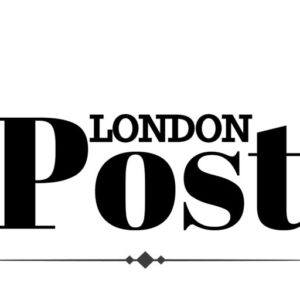Strategic planning is the backbone of any successful business, enabling organizations to align efforts, allocate resources efficiently, and achieve long-term objectives. While individual strategies can be effective, integrating collaborative tools like Mutual Action Plans (MAPs) offers a more structured and inclusive approach to goal-setting.
MAPs are agreements between two or more parties that outline shared objectives, responsibilities, and timelines. They create a roadmap for collaboration, ensuring everyone involved understands their role in reaching a common goal. This blog explores how implementing MAPs can streamline your business goals by fostering accountability, improving communication, and driving results.
Fostering Accountability Through Clarity
One of the core benefits of a Mutual Action Plan is the clarity it provides to all stakeholders. MAPs clearly define who is responsible for each task, eliminating ambiguity and ensuring that no aspect of the project is overlooked. For businesses, this structured approach helps team members stay focused on their responsibilities while keeping track of deadlines. When every stakeholder knows what is expected of them, accountability naturally increases, reducing the chances of delays or miscommunication. Additionally, this clarity helps management monitor progress and address challenges before they escalate.
Enhancing Collaboration Across Teams
In many organizations, cross-departmental collaboration can be challenging due to differing priorities, communication styles, or operational silos. MAPs bridge these gaps by creating a centralized plan that aligns all teams toward a shared objective. This unified approach fosters better teamwork by providing clear guidelines for collaboration and ensuring that all parties are working towards the same outcomes. Whether it’s a product launch or a marketing campaign, having a Mutual Action Plan ensures seamless coordination across departments, saving time and resources.
Leveraging Technology
Leveraging technology is essential for the successful implementation of business strategies. With the right tools and software, teams can streamline their processes, improve collaboration, and monitor progress in real time. One key benefit of utilizing software is the ability to integrate a joint action plan across platforms, ensuring that all stakeholders are on the same page and have access to the most up-to-date information. Technologies like project management software, cloud storage, and CRM systems make it easy to track tasks, share documents, and communicate effectively. By automating routine tasks and providing actionable insights, technology empowers businesses to stay organized, make informed decisions, and execute their plans more efficiently.
Streamlining Communication for Efficiency
Effective communication is vital for any business initiative, but it’s often easier said than done. Mutual Action Plans streamline communication by offering a single reference point for all stakeholders. Instead of juggling multiple emails, meetings, or project management tools, teams can refer to the MAP for updates, timelines, and expectations. This not only reduces unnecessary back-and-forth but also ensures that everyone has access to the same information. By simplifying communication, MAPs allow businesses to operate more efficiently and make informed decisions faster.
Building Trust and Strengthening Relationships
Trust is a key component of successful collaborations, whether between teams, clients, or external partners. MAPs play a significant role in building trust by demonstrating a commitment to transparency and accountability. When everyone involved can see a detailed plan with clear milestones and shared responsibilities, it fosters confidence in the process. For external partnerships, MAPs also act as a tangible representation of mutual commitment, strengthening relationships and ensuring that both parties feel equally invested in the outcome.
Driving Results Through Structured Goal-Setting
The structured nature of a Mutual Action Plan ensures that every task and milestone directly contributes to achieving the overarching business goal. Unlike vague action plans, MAPs provide measurable targets and deadlines, enabling teams to track progress effectively. This results-oriented approach keeps projects on track and minimizes the risk of scope creep. Furthermore, by breaking down complex goals into manageable steps, MAPs make it easier to celebrate small wins along the way, boosting morale and motivation.
Adapting to Change With Flexibility
Business environments are dynamic, and unexpected changes are inevitable. Mutual Action Plans (MAPs) offer the flexibility needed to adapt to these changes without compromising progress. Since MAPs are collaborative and transparent, they can be updated in real-time to reflect new priorities or address unforeseen challenges. This adaptability ensures that businesses remain resilient and responsive while keeping all stakeholders aligned. By integrating flexibility into the planning process, MAPs help organizations navigate uncertainties more effectively.

Achieving goals requires more than individual effort—it demands collaboration, accountability, and adaptability. Mutual Action Plans offer a proven framework for streamlining business goals by aligning teams, fostering trust, and driving results. Integrating maps into your strategic planning process can improve communication, enhance teamwork, and help you stay resilient in the face of challenges. Whether managing internal projects or collaborating with external partners, adopting MAPs can be a game-changer for your business. Embrace this powerful tool to ensure long-term success and achieve your organizational objectives more efficiently.








